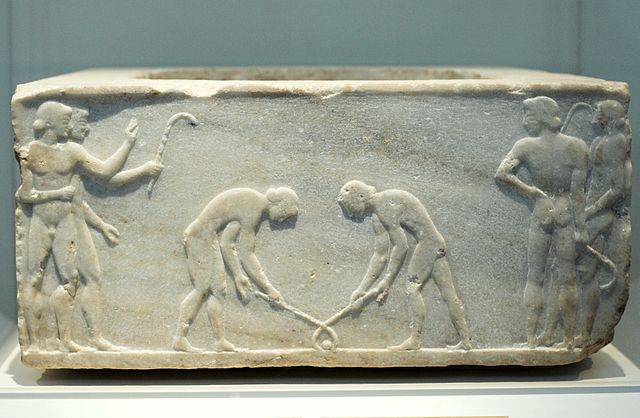Hockey is a term used to denote a family of various types of both summer and winter team sports which originated on either an outdoor field, sheet of ice, or dry floor such as in a gymnasium. While these sports vary in specific rules, numbers of players, apparel, and playing surface, they share broad characteristics of two opposing teams using a stick to propel a ball or disk into a goal.
The word "hockey" in Canada, the United States, Russia, and most of Eastern and Northern Europe, typically refers to ice hockey.
Sledge hockey (or "sled hockey") is now called "Para ice hockey". It is the only hockey sport on ice created exclusively for participants with physical disabilities.
Bas relief approx. 600 BC, in the National Archaeological Museum of Athens
Bandy game in Sweden
Field hockey is a team sport structured in standard hockey format, in which each team plays with 11 players in total, made up of 10 field players and a goalkeeper. Teams must move a hockey ball around a field by hitting it with a hockey stick towards the rival team's shooting circle and then into the goal. The match is won by the team that scores the most goals. Matches are played on grass, watered turf, artificial turf, or indoor boarded surface.
Field hockey at the 2018 Summer Youth Olympics
Relief of c. 510 BC depicting ancient Greek players of kerētízein, an ancestral form of hockey or ground billiards; in the National Archaeological Museum, Athens
A game of hockey being played between Germany and Scotland at the 1908 London Olympics
Indian player Dhyan Chand won Olympic gold medals for his team in 1928, 1932 and 1936. Photo shows him scoring a goal against Germany in the 1936 Olympics hockey final.








